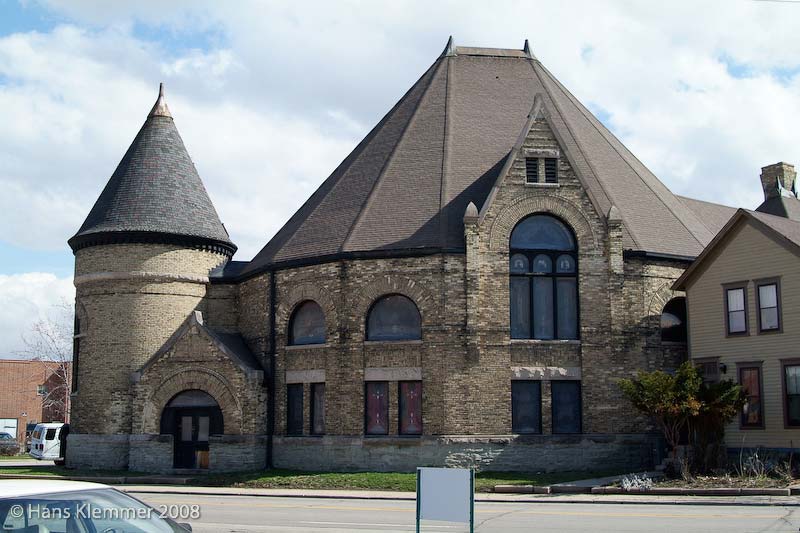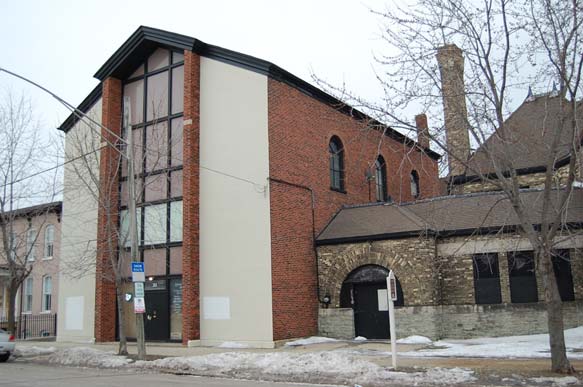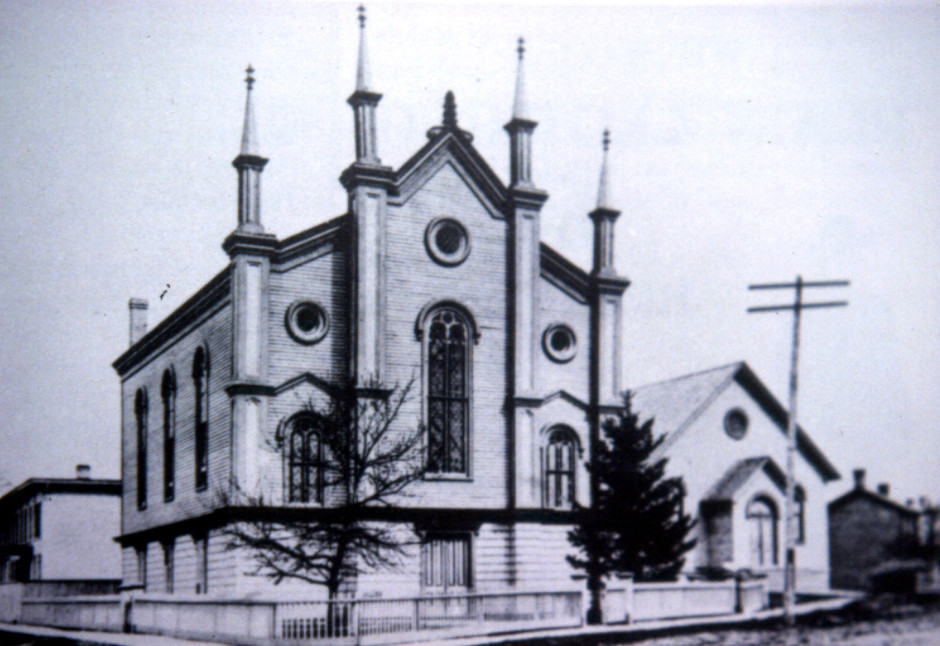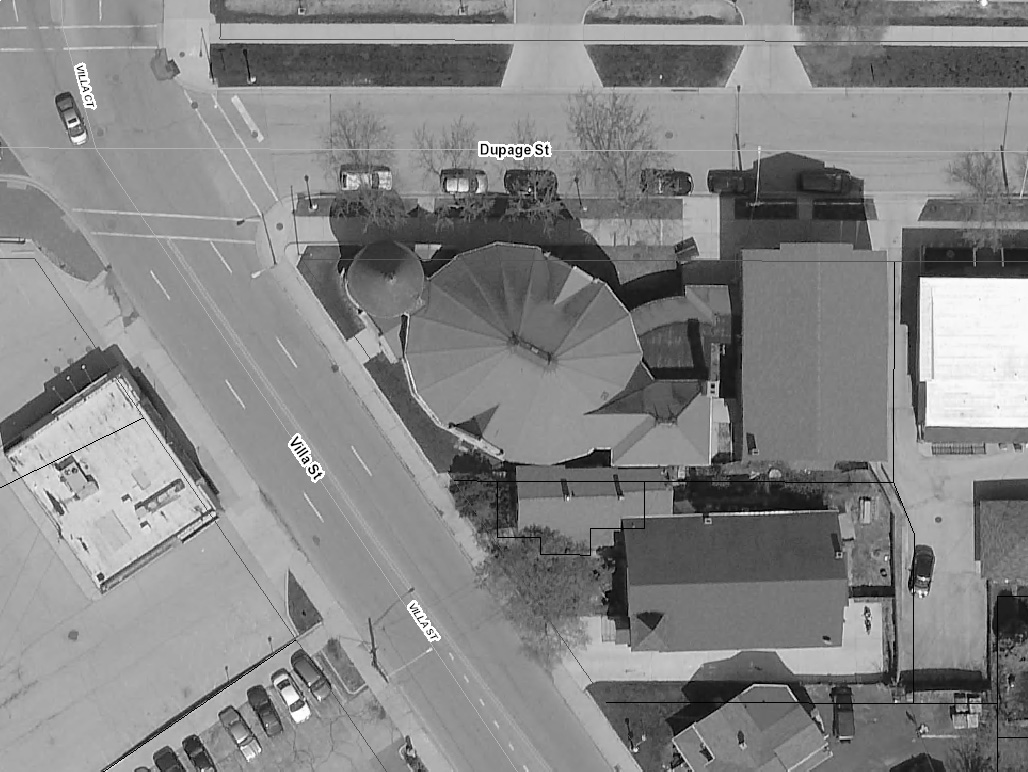261 DUPAGE STREET
HISTORIC SIGNIFICANCE
261 DuPage Street, better known as the Elgin Unitarian Universalist Church was built in 1892. However, the congregation, First Universalist Society of Elgin, had even older ties than its new meeting space being organized in 1857. In 1865 a Sunday School was organized and by March 28, 1867, the Society built a structure that was 40 feet by 60 feet and included 56 pews all of which, was paid in full and 'free of debt.' This building still exists, though heavily altered, and can be seen right next to the 1892 building on DuPage Street.
As Elgin grew, so did the church and soon the 1867 space was too small for the Society. The new, 1892, building was placed on the corner of DuPage and Villa Streets and was constructed in the shape of a watch to pay homage to the Elgin National Watch Company. This may be an unusual design feature, however, the building committee at that time included George Hunter, a watch factory superintendent who employed his nephew, W. Wright Abell, a soon to be notable Elgin architect. The building was built by John Fluck, a local Elgin mason, and Harry Ford for $20,000.
After 100 years of ownership, the Society sold the property and moved their congregation in an 1890s barn located on Randall Road that was dismantled and reconstructed in a new location off of Highland Avenue.
For more information about the church and its history in Elgin, please click here.
ARCHITECTURAL SIGNIFICANCE
261 DuPage Street is a significant property to the Elgin Historic District. It is a wonderful example of the Richardsonian Romanesque style. This style was duly named after Boston architect, Henry Hobson Richardson, who adapted the design of European Romanesque buildings. Some features typically seen in the Richardsonian Romanesque style that are present at 261 DuPage Street includes a heavy, limestone foundation, a rusticated facade made out of cream colored brick, round topped arches over the windows and entries and one of the most prominent features, a tower with a conical roof.
Sources: 1987 Heritage Plaque Application; Audio: TextAloud







